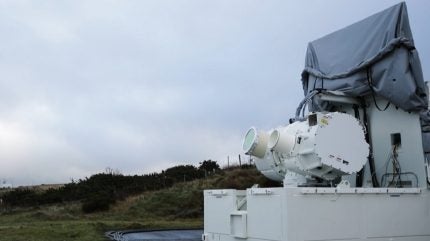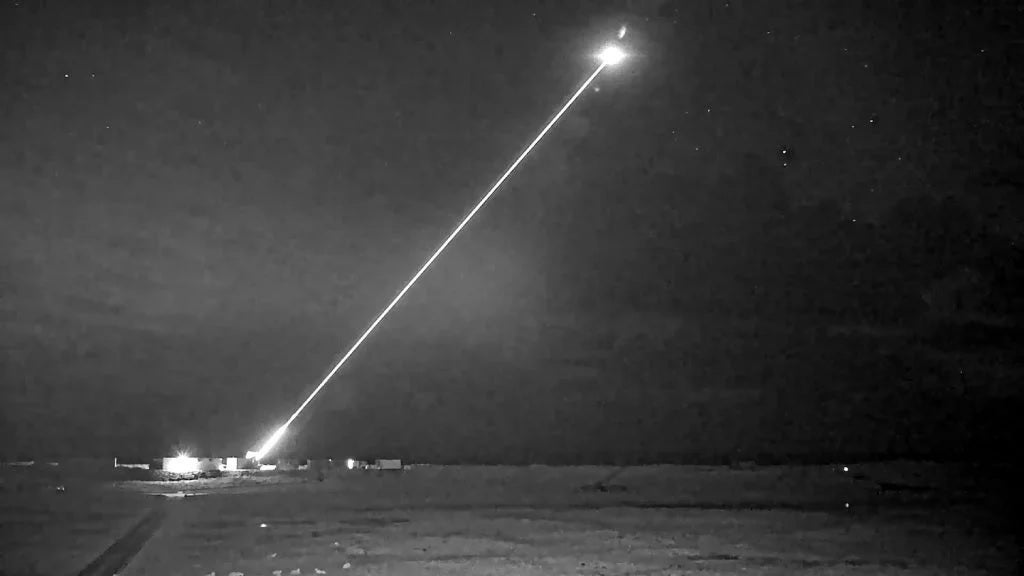
The UK Government has confirmed the Royal Navy will see the first of its warships fitted with the DragonFire laser-directed energy weapon (LDEW) system no later than 2027, a timeline seemingly expedited compared to what was understood during briefings earlier this year.
In a 23 April announcement detailing the UK Conservative Government’s intention to increase defence spending to 2.5% of GDP by 2030, Prime Minister Rishi Sunak stated that the Royal Navy would see DragonFire fitted in the next few years.
“Backed by £350m in government funding, DragonFire can fire at any target visible in the air at around £10 a shot and with an accuracy equivalent to hitting a pound coin from a kilometre away – and the weapon is due to be fitted to Royal Navy ships well ahead of schedule in 2027,” Sunak said.
This timeline was subsequently reiterated on 25 April by UK Defence Procurement Minister James Cartlidge, who said that the UK Ministry of Defence (MOD) had “committed to accelerating” the DragonFire LDEW into operational capability.
“This is being procured under the new Integrated Procurement Model, and so we will be equipping multiple Royal Navy ships with DragonFire LDEW as a minimum deployable capability from 2027 and will spirally develop as necessary. As such, there will be no initial operating capability or full operating capability date,” Cartlidge stated.
Second-generation DragonFire needed
Earlier this month, before the announcement by Sunak, the UK MoD said that it would begin integrating DragonFire onto Royal Navy warships “soon”.
How well do you really know your competitors?
Access the most comprehensive Company Profiles on the market, powered by GlobalData. Save hours of research. Gain competitive edge.

Thank you!
Your download email will arrive shortly
Not ready to buy yet? Download a free sample
We are confident about the unique quality of our Company Profiles. However, we want you to make the most beneficial decision for your business, so we offer a free sample that you can download by submitting the below form
By GlobalDataRegarding the specific type of vessel that will feature the DragonFire, the MoD told Naval Technology at the time that “the specifics of which ships and where onboard” were being worked on.
“However, investment will see LDEW capability across multiple vessels,” an MOD spokesperson said.
In March, Naval Technology was invited to a rare briefing inside Porton Down, a secret government site where a range of emergent technologies is researched, to discuss the development of the DragonFire DEW capability.
During the briefings, DragonFire was described as a “capability demonstrator” and did not have a funded pathway into service with the UK military at that time. However, there were recognised use cases in counter-drone operations in the land and maritime domains.
One official at Porton Down stated that a “second generation” system would be required.
Development timelines for DragonFire or future iterations were also dependent on funding decisions being taken in the UK MOD, which was trying to figure out “where and how” to take UK LDEW forward, but that there was “ambition” for further testing, officials said.
The consensus among officials present during the media visit was that additional testing and experimentation would be necessary to further develop and mature UK LDEW systems.

One such area would be in removing commercial-grade overseas-sourced components that have been used in DragonFire such as the fibre amplifier bundles used to turn milliamps of power input into a much larger output, a crucial capability to sustain a beam on target for the several seconds needed to have to desired effect.
Other components would have to be militarised for the LDEW to cope with the conditions experienced during land or maritime combat operations.
Land-based test firings and interceptions of target drones took place in January this year at the MOD Hebrides test range.
Which ships could host DragonFire?
The size of the DragonFire LDEW and associated infrastructure is broadly around the size of a TEU shipping container, with the required power source not as high as might be thought due to the use of amplifiers contained within the system.
The reference to “Royal Navy” vessels appears to exclude the systems being fitted to Royal Fleet Auxiliary vessels, which would have the size, weight, and power capacity to host such capabilities.
The Royal Navy does operate the XV Patrick Blackett (X01), an experimental trials and technology host platform, although it could be considered to be too small for DragonFire testing.
Alternatively, the Type 23 frigates and Type 45 destroyers are both part-way through respective refit processes, with both classes seeing upgrades to engines and power generation.
Additional reporting from John Hill.







